Tom's Hardware Verdict
The Alienware Aurora R10 Ryzen Edition sports a cool design and offers strong performance, but it runs loud and needs better cooling if you’re opting for the configuration with the 16-core CPU.
Pros
- +
Attractive new design
- +
Ample front port selection
- +
Strong performance
Cons
- -
Inadequate cooling for 3950X
- -
Noisy under load
Why you can trust Tom's Hardware
AMD’s Ryzen processors have a found a new home. The Alienware Aurora R10 Ryzen Edition ($3,629.99 as tested) is housing the company’s latest chips, including, in our case, the powerful 16-core, 32-thread AMD Ryzen 9 3950X CPU. The system is also housed in an eye-catching new design. Paired with an RTX 2080 Ti graphics card, this Aurora offers powerful gaming and productivity performance. But the system wasn’t designed specifically with the 3950X in mind, and we have questions about the cooling with that beastly processor.
Design
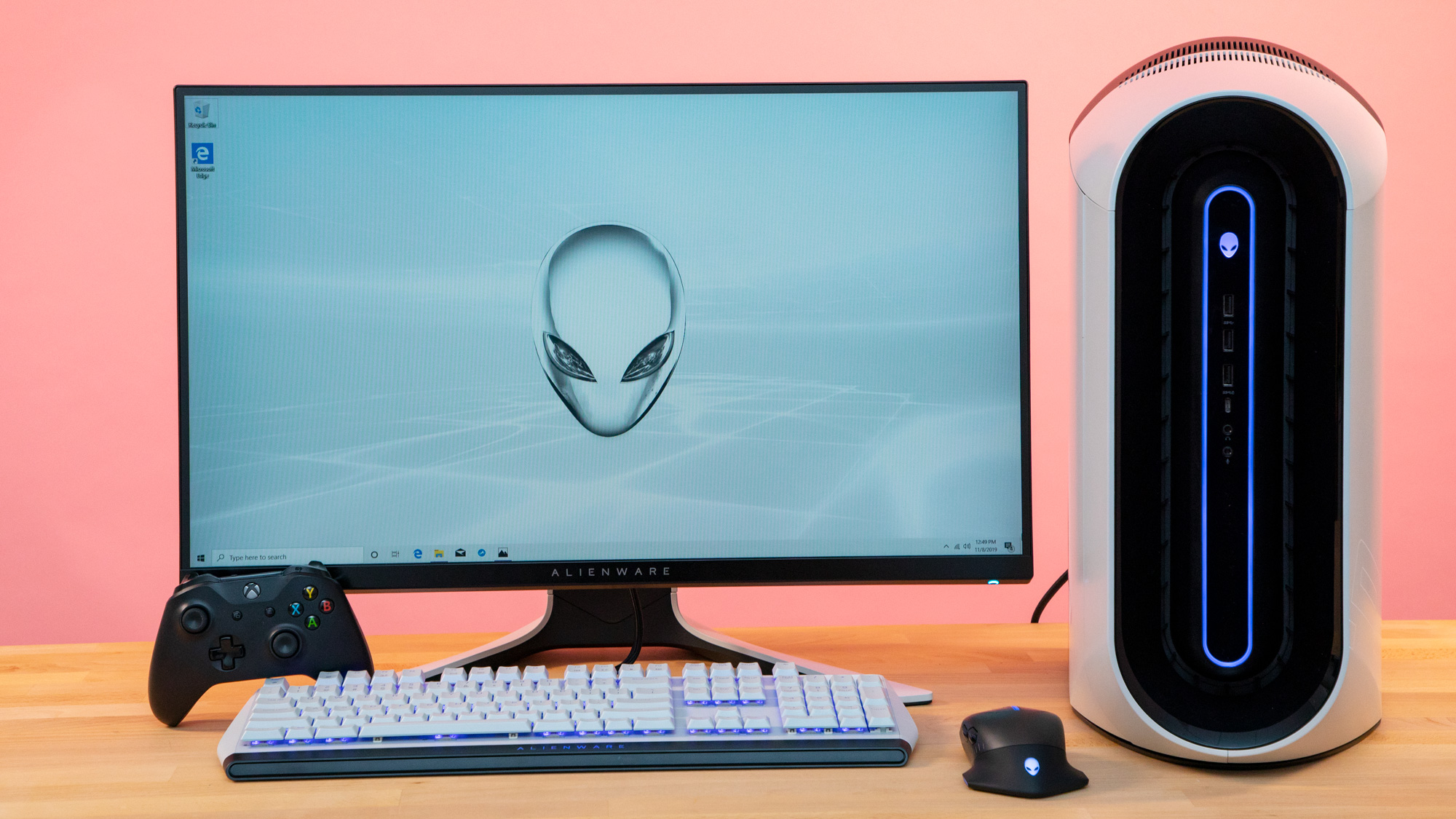
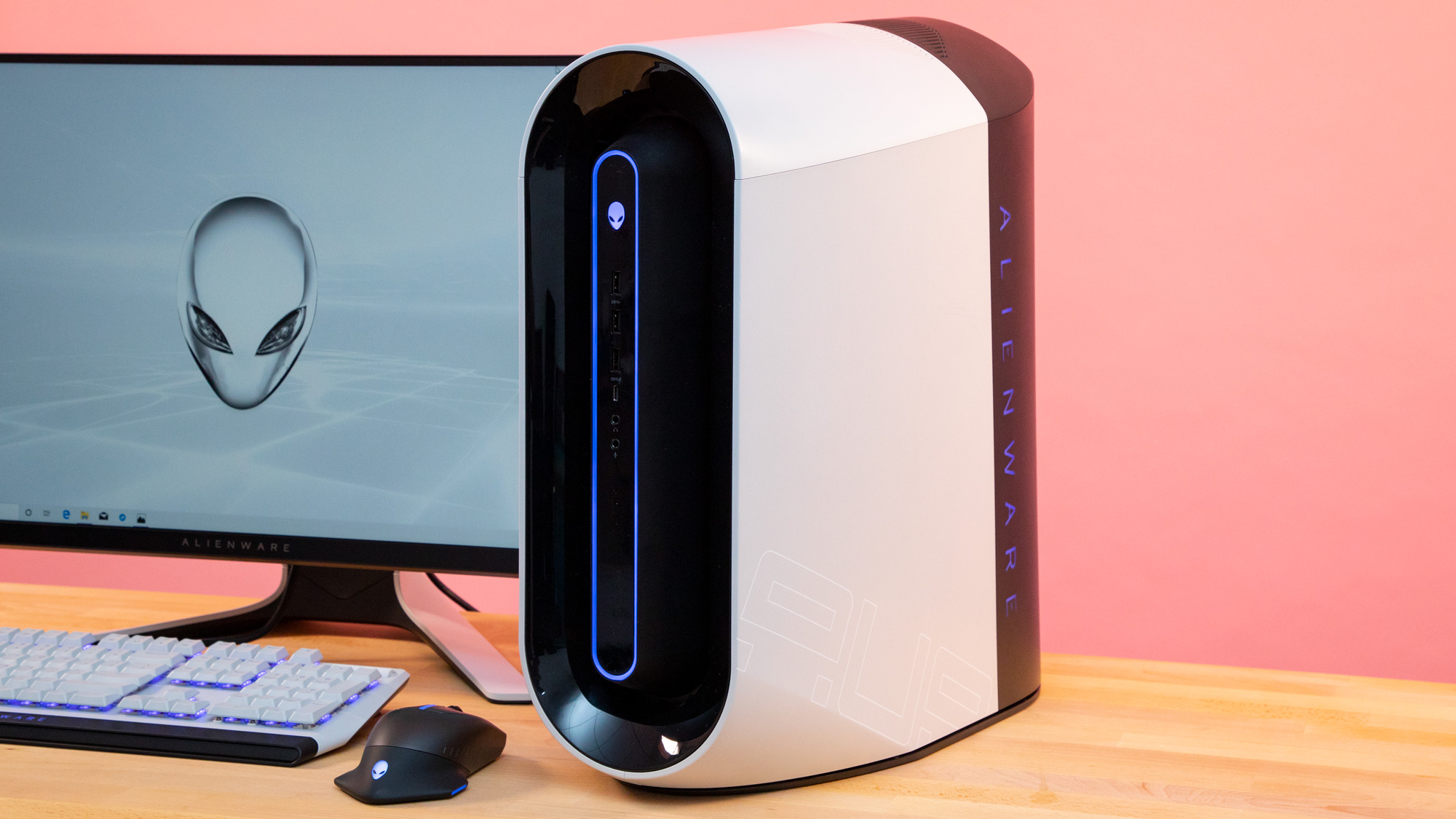
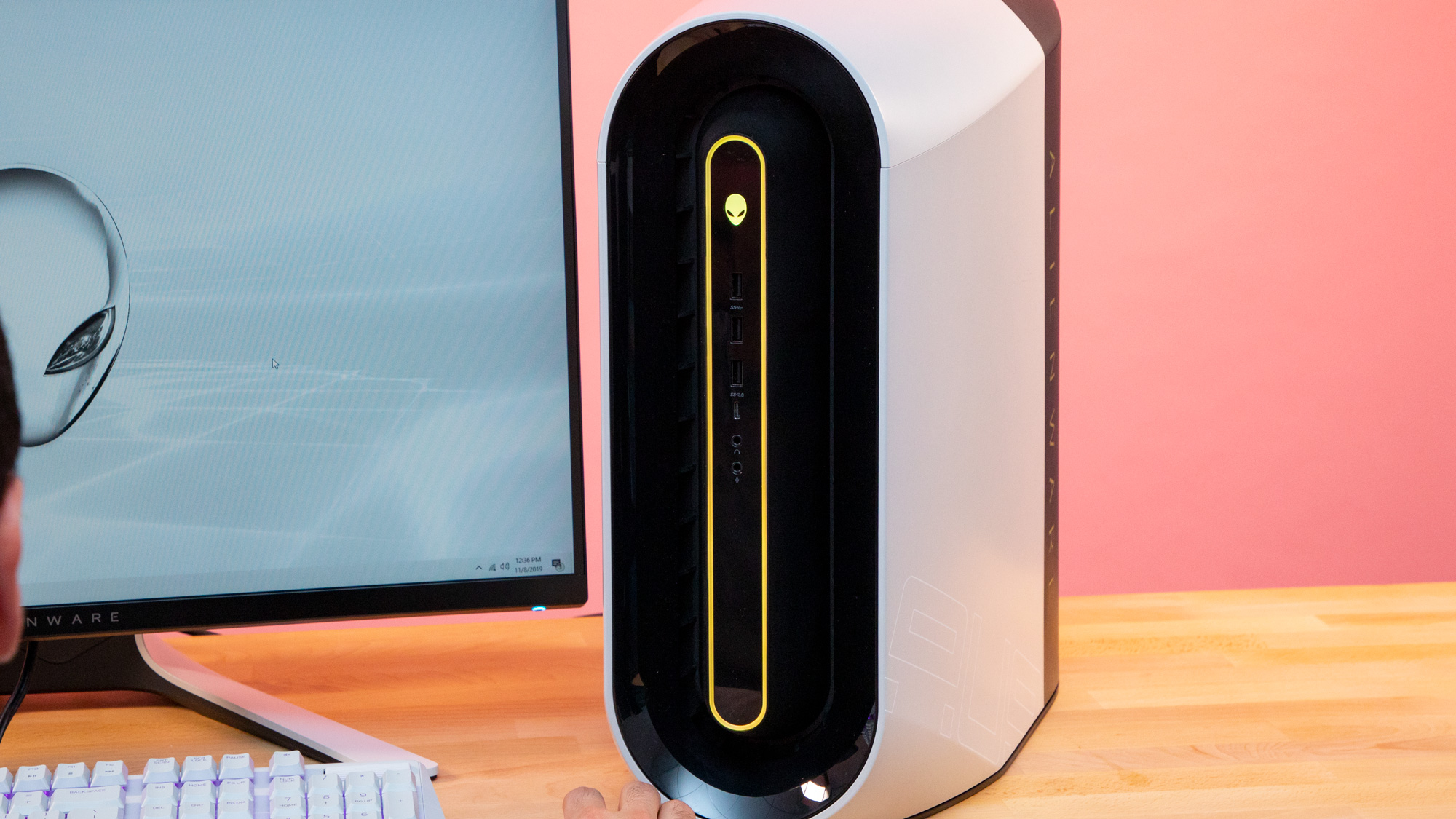

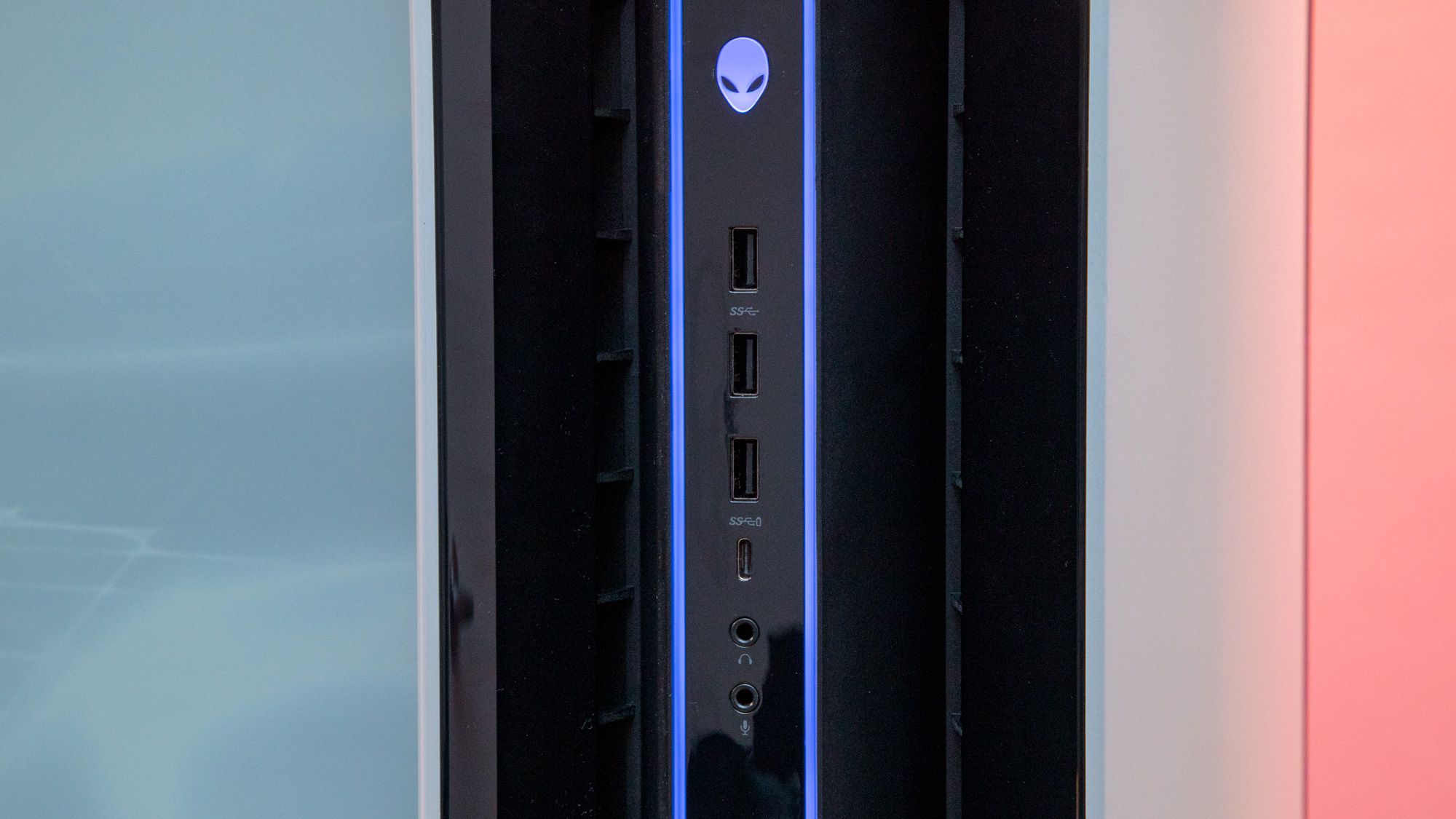
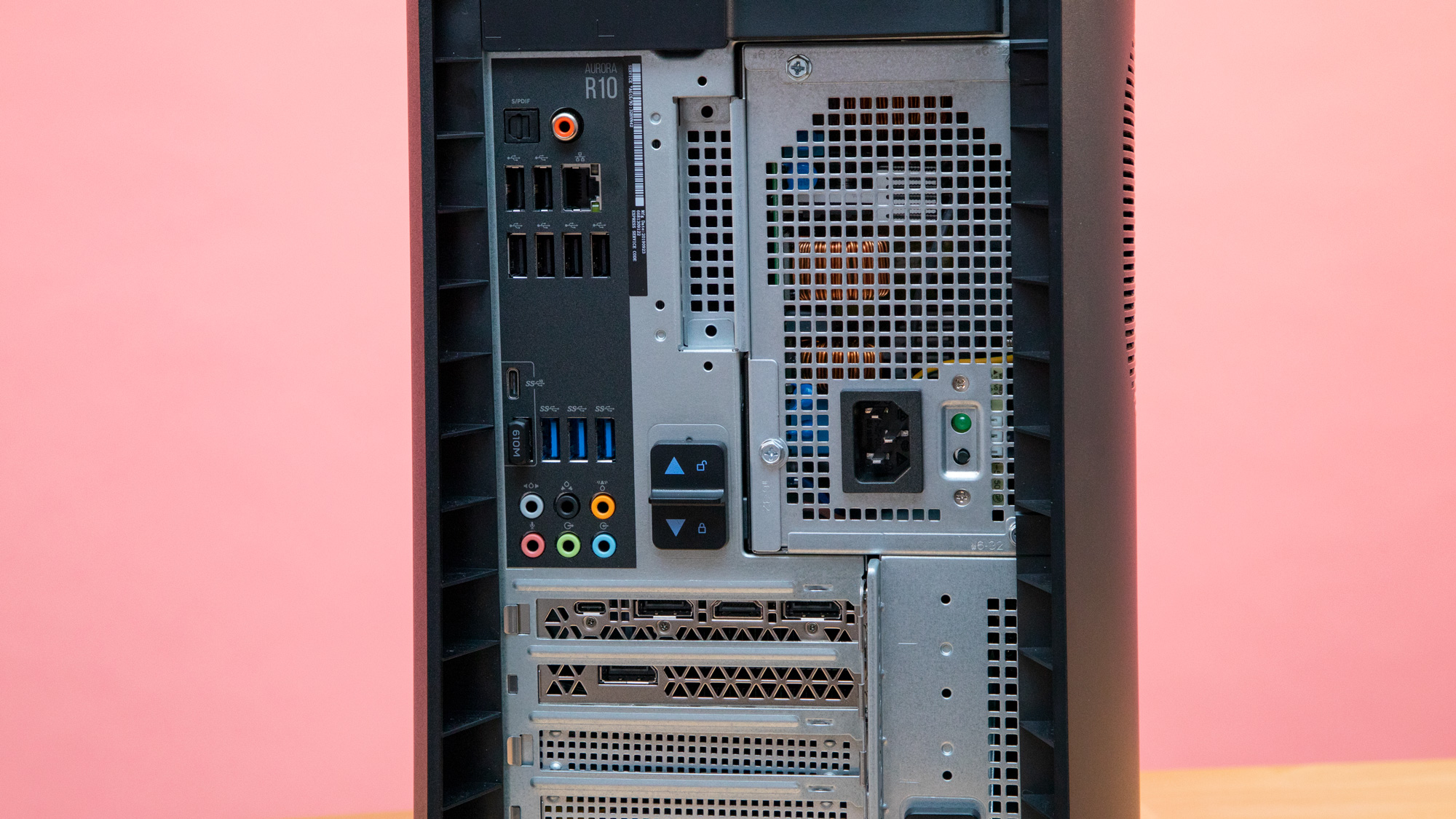
Finally, the Alienware Aurora has gotten a facelift. After years on the company’s traditional spaceship design, the company’s mid-tower desktop has moved on to the “Legend” aesthetic pioneered by the Alienware Area-51m , one of our best gaming laptops. Now, the PC case is black and white with curves and rounded edges.
The front looks like a massive air purifier. It’s oblong with an RGB oval and Alienware logo in the center. Vents surround that, allowing for air intake. On the front panel are also a mic jack, headphone jack, three USB 3.1 Gen 1 Type-A ports and a USB 3.1 Gen 1 Type-C port. The sides of our review unit came in white (or “lunar light,” as Alienware calls it), and the back third is black. On the right side are some honeycomb-shaped vents, while the left side has the Alienware logo (lit in RGB, naturally) and “AUR” in a militaristic font.
It’s an interesting design, which gets taller towards the back and looks like a massive spaceship engine. I feel like if I attached two of these to the back of a car, I could make it fly.
The Aurora R10 is 18.9 x 17 x 8.8 inches (481.6 x 431.9 x 222.8mm), so it takes up plenty of space on a desk. That’s larger than the HP Omen Obelisk (17.1 x 14.1 x 6.5 inches / 434.3 x 358.1 x 165.1mm), but smaller than the boutique CLX Ra (20.5 x 9.5 x 20.5 inches / 520 x 240 x 520mm).
Specifications
| Processor | AMD Ryzen 9 3950X |
|---|---|
| Motherboard | Alienware proprietary 0NWN7M (AMD X570 Chipset) |
| Memory | 32GB DDR4-2933MHz HyperX Fury XMP |
| Graphics | Nvidia GeForce RTX 2080 Ti (11GB GDDR6) |
| Storage | 1TB M.2 PCIe NVMe SSD |
| Networking | Killer Wi-Fi 6 AX 1650X, Bluetooth 5.0, Ethernet jack |
| Ports (Front) | Microphone jack; Headphone jack; 3x USB 3.1 Gen 1 Type-A; USB 3.1 Gen 1 Type-C |
| Ports (Back) | S/PDIF; Ethernet; 6x USB 2.0 Type-A; USB 3.1 Gen 2 Type-A; USB 3.1 Gen 1 Type-C; 3x USB 3.1 Gen 1 Type-A; Line out; Line in; Surround output; Subwoofer |
| Video Output | HDMI; 3x DisplayPort; VirtualLink |
| Power Supply | 850W |
| Case | Alienware Aurora R10 |
| Cooling | 120mm CPU liquid cooler; 120mm case fan; |
| Operating System | Windows 10 Home |
| Extras | RGB lighting |
| Dimensions | 18.9 x 17 x 8.8 inches (481.6 x 431.9 x 222.8mm) |
| Price as Configured | $3,629.99 |
Ports and Upgradeability
Alienware provides plenty of ports on both the front and back of the R10, which makes it easy to expand with external storage, as well as leaves plenty of room for peripherals.

On the front, there’s a microphone jack, headphone jack, three USB 3.1 Gen 1 Type-A ports and a USB 3.1 Gen 1 Type-C port. That’s a lot for a front panel.
Get Tom's Hardware's best news and in-depth reviews, straight to your inbox.

On the back is a S/PDIF digital output, an Ethernet jack, six USB 2.0 Type-A ports, a USB 3.1 Gen 1 Type-C port, a USB 3.1 Gen 2 Type-A port and three USB 3.1 Gen 1 Type-A ports. There’s also a bunch of analogue audio ports, just as you would expect to find on any mid-to-high-end motherboard.

The Aurora is upgradeable, to a point. It really hasn’t changed on the inside from the previous spaceship-inspired design. You can remove the right-side panel without any screws by pulling a switch at the back near the top. Once inside, you can swing the power supply out. This exposes the CPU, which is water-cooled, as well as three empty hard drive bays: two 2.5-inch bays on the bottom and one 3.5-inch bay on the side.
There are four RAM slots on the proprietary motherboard, two of which were occupied in our test config, so you can add more RAM later. The PCIe-NVMe slot is behind the GPU, so you’ll have to remove that to add more M.2 storage.
I do wish that Alienware would make the move HP did with the Obelisk and switch to standardized parts to allow for easier upgrading. That doesn’t entirely work with this design, though, as the swing-out power supply isn’t easily removed.
Gaming and Graphics
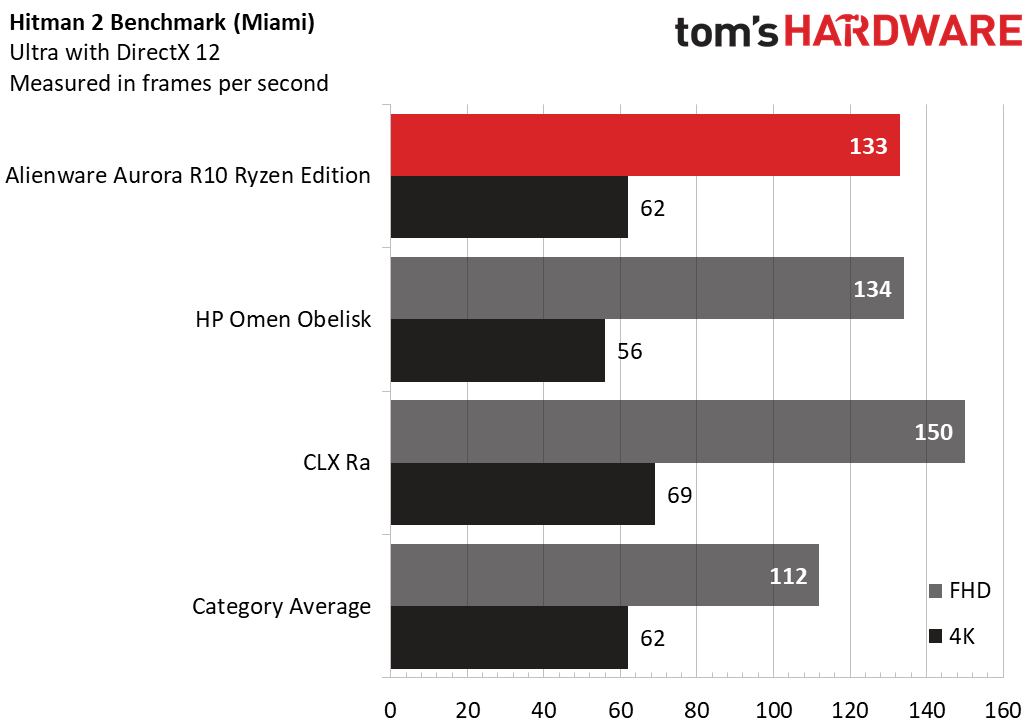
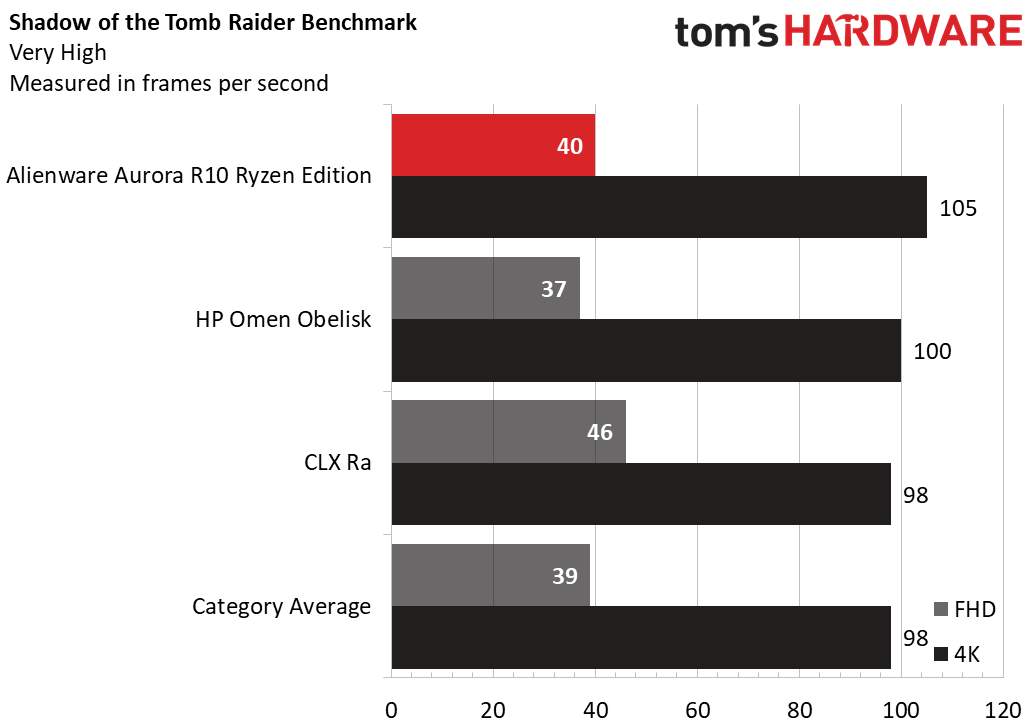
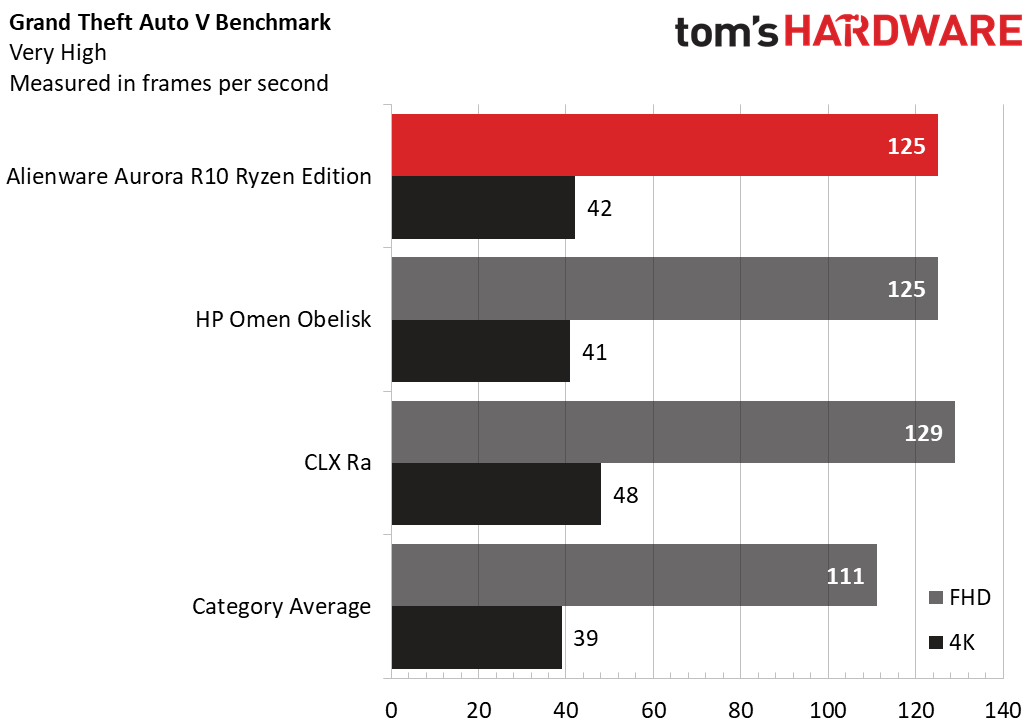
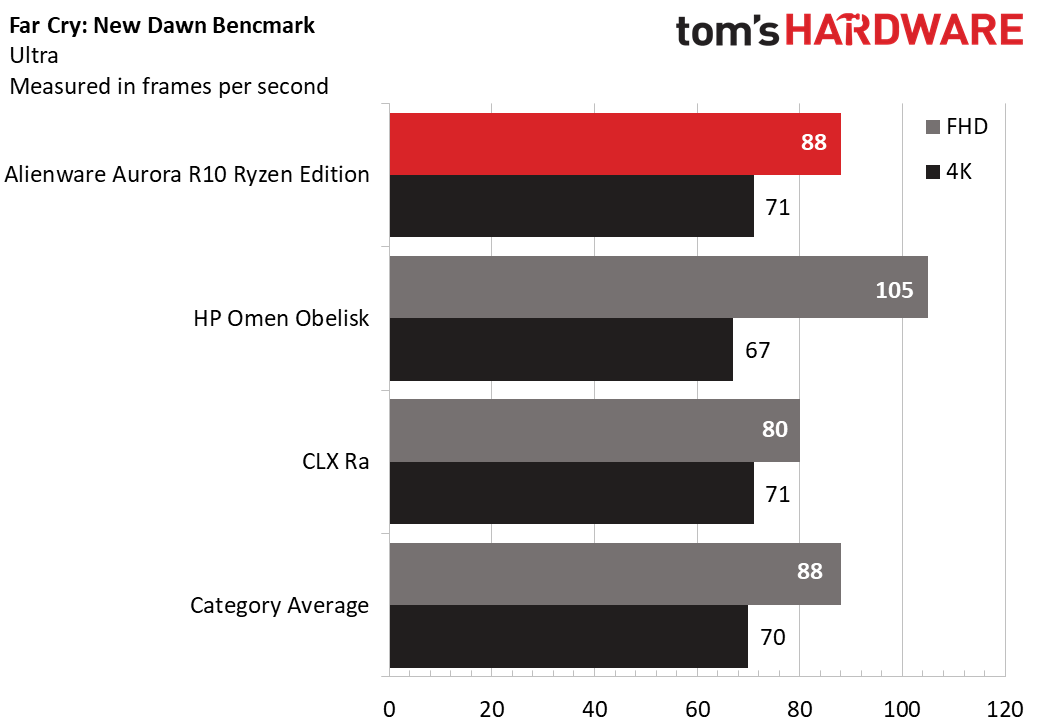
Our Aurora came outfitted with an Nvidia GeForce RTX 2080 Ti, which offers enough power to play any game at its highest settings at 1080p, and often at 4K resolution. When I played Red Dead Redemption 2 on its highest presets (favoring quality as much as possible) at 1080p, the game ran between 73 and 77 frames per second (fps). At 4K, it ran between 33 and 40 fps.
On the Hitman 2 Miami benchmark (1080p, ultra), the Aurora ran at 133 fps, surpassing the desktop average of 112 fps, though the Obelisk hit 134 fps and the Ra was even faster at 150 fps. At 4K, the Aurora dropped to 62 fps, which is still excellent. The Ra reached 69 fps, and the Omen hit 56 fps.
When it came to Shadow of the Tomb Raider (1080p, highest), the Aurora took the crown at 105 fps, beating the average (98 fps) and the Omen and Ra. At 4K, the Aurora ran the game at 40 fps, but the Ra was higher at 46 fps.
The Grand Theft Auto V benchmark (1080p, very high) was a bit of an equalizer. It ran at 125 fps on both the Alienware and the Omen and at 129 fps on the Ra. The average is 111 fps. At 4K, the Aurora ran it at 42 fps.
It ran the Far Cry: New Dawn benchmark (1080p, ultra) at 88 fps, tying the average and beating the Ra. The Omen outperformed here at 105 fps.
To stress test the Aurora, we ran the Metro Exodus benchmark 15 times on the RTX preset at 1080p. It ran at an average frame rate of 74.4 fps, starting at 75.6 fps on the first run and getting as low as 74.2 fps in later runs. That’s pretty consistent.
During the test, the CPU ran at an average clock speed of just under 4.1 GHz and average temperature of 63 degrees Celsius (145.4 degrees Fahrenheit). The GPU ran at an average clock speed of 1.5 GHz and an average temperature of 74.5 degrees Celsius (166.1 degrees Fahrenheit).
Productivity Performance
The 16-core Ryzen 9 3950X in the Aurora tore through our benchmarks tests.


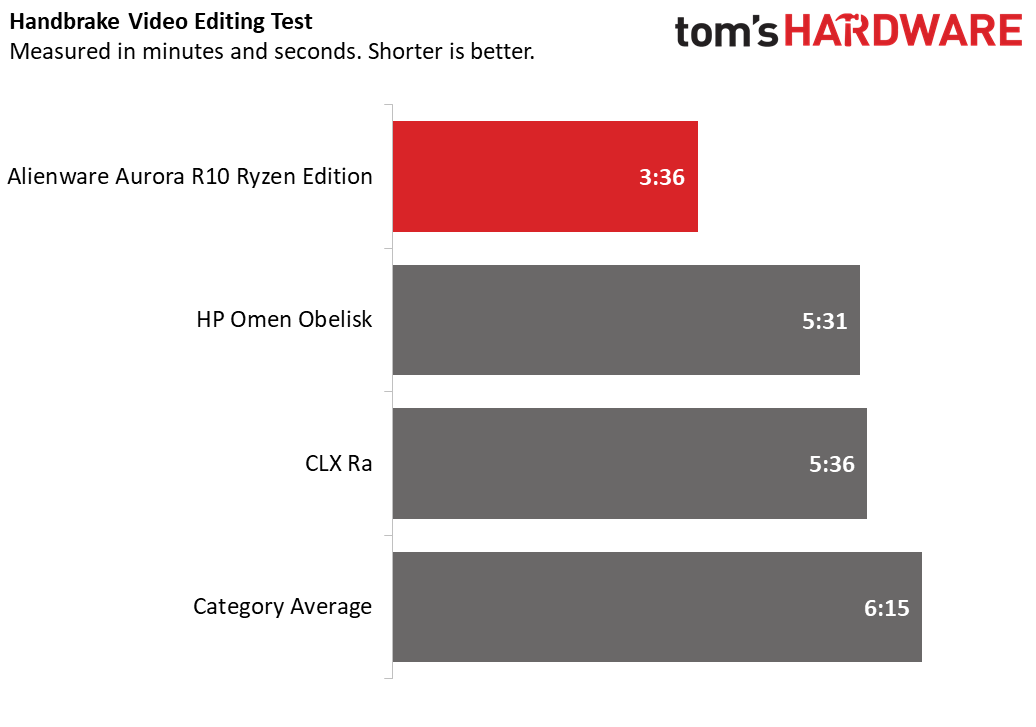
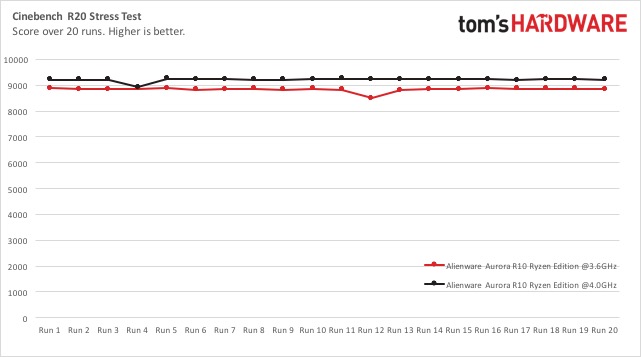
On Geekbench 4.3, it earned a score of 52,626, surpassing the gaming desktop average of 37,302 and both the Obelisk (34,167 with an Intel Core i9-9900K) and the Ra (38,613,with an AMD Ryzen 9 3900X). These CPUs don’t have the same number of cores as the 3950X (no other CPU on a mainstream platform does), but they are in some similarly priced systems.
It took the Aurora 5 seconds to copy 4.97GB of data, a rate of 1,017.9 MBps. That tied the Ra and is faster than the gaming desktop average (682.2 MBps). The Omen Obelisk was faster at 1,696.4 MBps.
On our Handbrake video editing test, the Aurora took 3 minutes and 36 seconds to transcode a 4K video to 1080p. That’s faster than the 6:15 average and both the Obelisk (5:31) and Ra (5:36).
We also stress tested the 16-core CPU with our Cinebench R20 loop, including with it overclocked as far as we can manage (black line). During the 20-run test, we saw an average CPU clock speed of 3.8 GHz and an average CPU temperature of 71.5 degrees Celsius (160.7 degrees Fahrenheit). Scores were largely consistent, falling around the 8,800 range without overclocking, except for a notable dip to the 8,500s at run 12.
Cooling and Overclocking: a 120mm AIO for a 16-Core CPU?
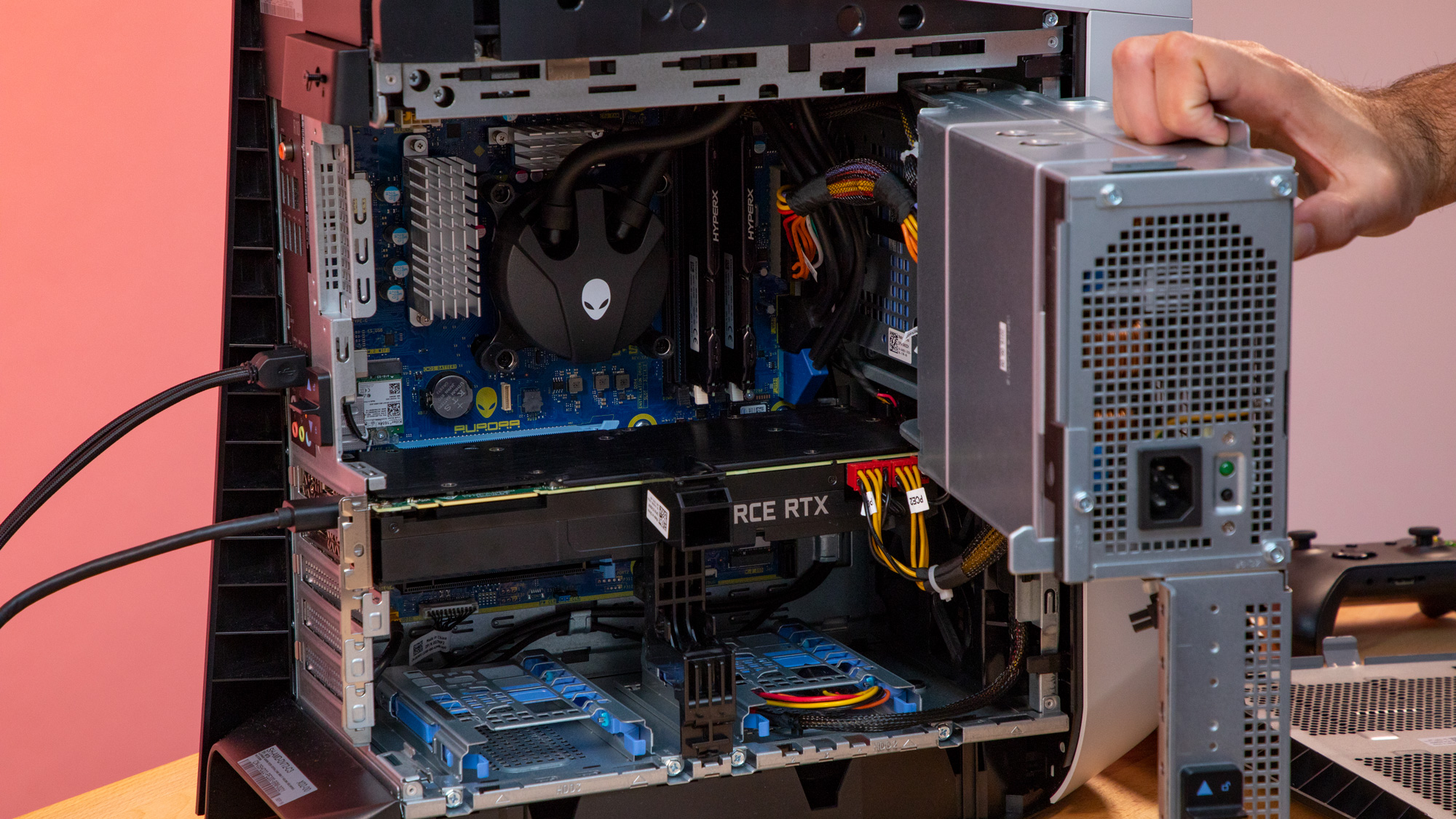
We had a few questions about cooling when we opened up the Aurora R10. For starters, the liquid cooler for the Ryzen 9 3950X has a 120mm radiator. When AMD announced the processor, it recommended a 280mm or larger all-in-one (AIO) cooler. The AIO in this machine is probably fine for many lesser processors in other configurations. But if you’re planning on doing lots of rendering or high-end video editing and will opt for the 3950X, or want the best possible overclocks, you may want to look for a system that offers beefier cooling--both on the CPU and elsewhere.
There’s a single 120mm case fan on the bottom of the front of the machine. It pulls in air through the oval-shaped opening, but in our unit, most of the air was blowing beneath the blower-style RTX 2080 Ti graphics card. While the vent does let air into the top of the case, there’s not a ton of room up there due to the design, which has the power supply fold over the motherboard. That also likely explains the large heatsinks on the VRMs.
We did try overclocking the 3950X but didn’t get very far. We got up to 4.0 GHz before our Cinebench stress test started crashing. With more cooling, you could possibly go further, although overclockability varies from chip to chip. When overclocked, the average temperature of the CPU was 86 degrees Celsius (186.8 degrees Fahrenheit) while running the Cinebench R20 stress test 20 times in a loop, though it often peaked higher.
When I played Red Dead Redemption 2 and during benchmarks, the Aurora’s fans were very loud, so be sure to get some headphones when you’re playing games. Again, more fans and a better cooling design would help tremendously here.
Peripherals
Our review unit came with basic pack-in peripherals: a cheap plastic keyboard with little travel and a mouse with four buttons, (including the left and right mouse buttons), and a scroll wheel. No, they won't be able to rival the best gaming keyboards or best gaming mice. Alienware does sell a bunch of peripherals with a new look to match the computer, including a wireless mouse and a keyboard with low-profile Cherry MX Red switches.
Software and Warranty
The big piece of software on the Alienware Aurora Ryzen Edition R10 is Alienware Command Center. This app lets you customize the RGB colors on the machine and other Alienware accessories, change audio settings, create a unified game library and view CPU, GPU and RAM frequency.
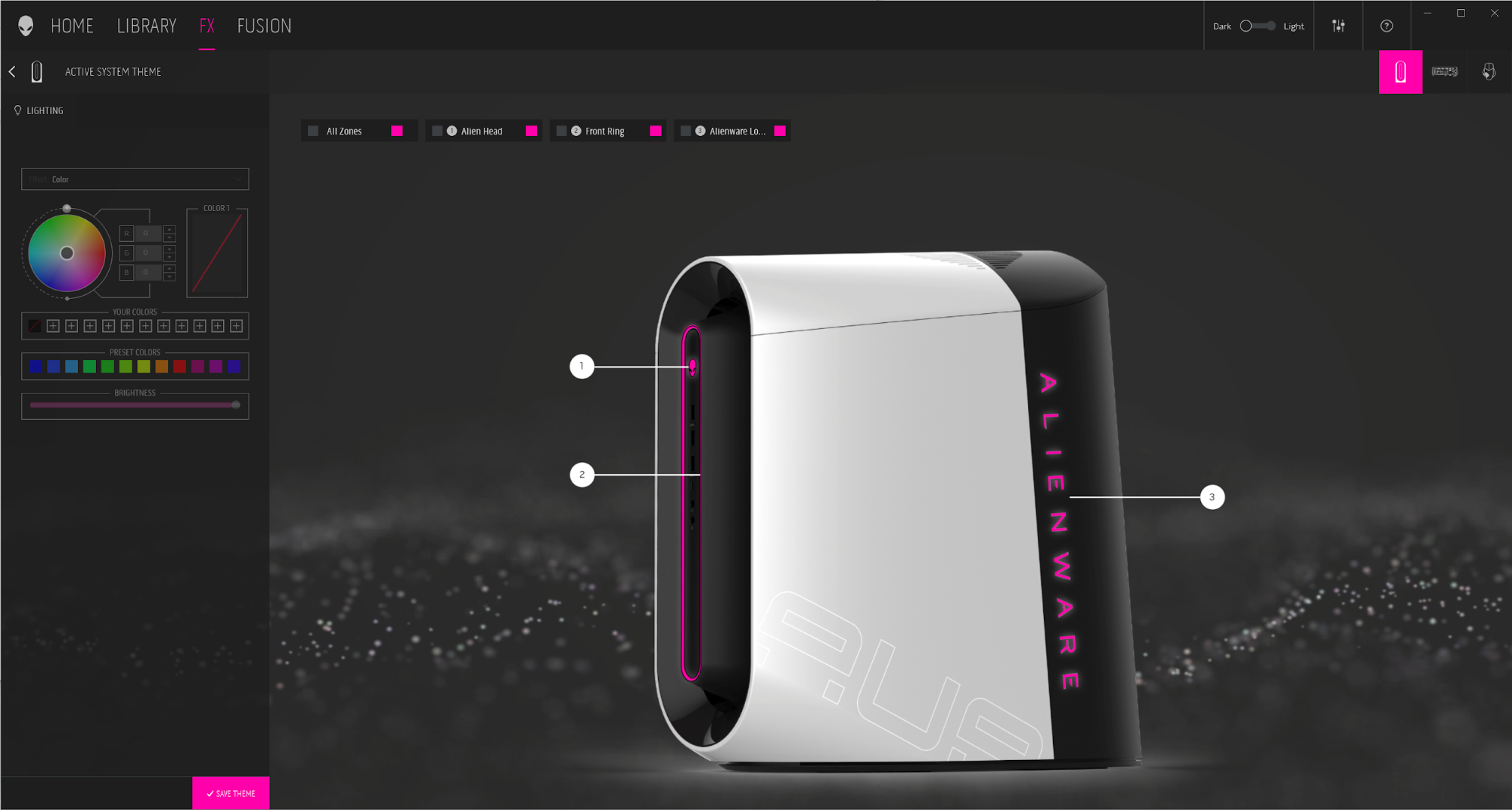
Alienware also includes Mobile Connect, its app to pair a phone with your PC.
Additionally, there’s all of the usual bloat that comes with Windows 10, including Hotspot Shield Free VPN, WhatsApp Desktop and Polarr Photo Editor.
Dell sells the Alienware Aurora Ryzen Edition R10 with a one-year warranty.
Configurations
The Alienware Aurora Ryzen Edition R10 we reviewed came with an AMD Ryzen 9 3950X, Nvidia GeForce RTX 2080 Ti, 32GB of HyperX Fury XMP RAM (clocked at a somewhat low 2,933 MHz), and a 1TB PCIe-NVMe M.2 SSD. All of that will cost you $3,629.99.
The base model starts at $1,199 with an AMD Ryzen 5 3500 CPU, an AMD Radeon RX 5700 graphics card, 8GB of HyperX Fury DDR4 RAM, a 1TB SATA hard drive and an 850W power supply. The lowest price 16-core Aurora R10 is $2,349.99 and includes liquid cooling.
At the very least, with either of those two configurations, you’ll want to step up to some kind of SSD. No one with a $1,000-plus PC in 2019 should be booting their operating system off a hard drive.
Bottom Line

The upscale configuration of the Alienware Aurora R10 Ryzen Edition we reviewed proved to be a powerful gaming and productivity system. Its look makes a statement and has a great selection of front ports.
But the cooling, particularly for a high-end chip, is questionable. It doesn’t meet AMD’s recommended standards, which means you may not get the full potential out of a chip that adds quite a bit to the cost of the PC--especially if you plan on overclocking. If you’re looking to get an R10, you may be better off getting a cheaper variant with a lesser CPU.
Otherwise, you may want to consider HP’s Omen Obelisk, which uses more standardized parts, making it easier to upgrade. That system could also use another fan, but it takes up less desk space and has a more mainstream look. The standardized parts that HP uses will give you a better upgrade path in general, and I wish Alienware would move more in that direction.
MORE: Best Gaming Desktops
MORE: How to Build A PC
MORE: All PC Builds Content

Andrew E. Freedman is a senior editor at Tom's Hardware focusing on laptops, desktops and gaming. He also keeps up with the latest news. A lover of all things gaming and tech, his previous work has shown up in Tom's Guide, Laptop Mag, Kotaku, PCMag and Complex, among others. Follow him on Threads @FreedmanAE and BlueSky @andrewfreedman.net. You can send him tips on Signal: andrewfreedman.01
-
nofanneeded Too expensive ... for 3,629.99 you can easy get threadripper 3 System with similar specs.Reply -
x4130 No mention of the fact that this system is running a B550A chipset vs X570? Or that the PCIe x16 slots run at x8 max, making the extra money for a 2080 Ti PCIe 3.0 card basically a waste?Reply -
groundrat I guess no one else has noticed that these look just like the desktops in the game Portal. Do you want GLaDOS? Because this is how you get GLaDOS.Reply